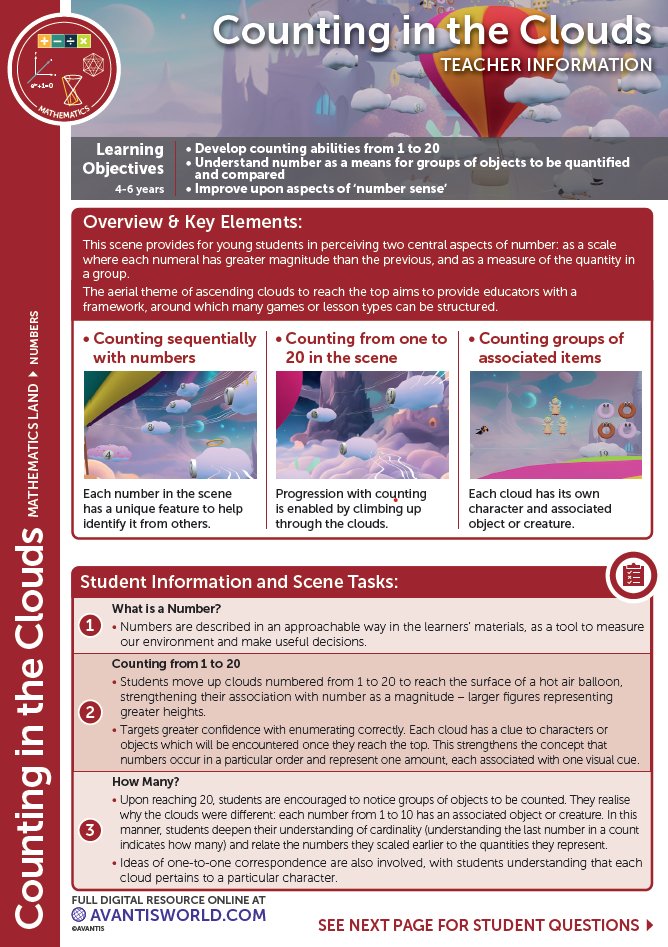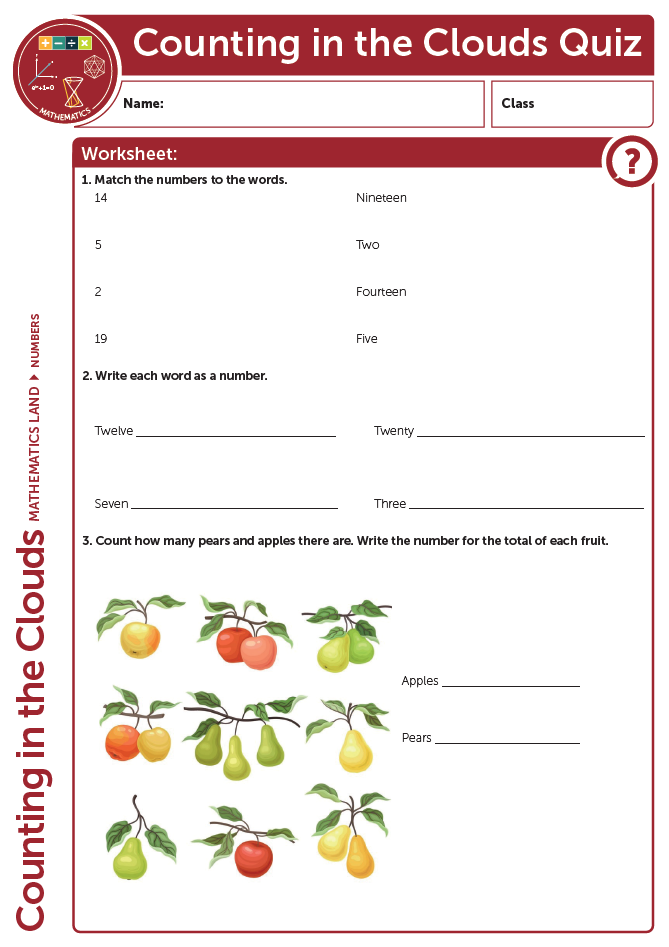 Loading...
Loading...
Initial language selection is based on your web browser preferences.
# Learning Objectives Develop counting abilities from 1 to 20, appreciating that numbers have a set order{.info} Understand number as a means for groups of objects to be quantified and compared{.info} Improve upon aspects of ‘number sense’ – cardinality, ordinality – including key vocabulary{.info} # What is a Number?{.objective .objective1} - Numbers are described in an approachable way in the learners' materials, as a tool to measure our environment and make useful decisions. # Counting from 1 to 20{.objective .objective2} - Learners move up clouds numbered from 1 to 20 to reach the surface of a hot air balloon, strengthening their association with number as a magnitude – larger figures representing greater heights. - Targets greater confidence with enumerating correctly. Each cloud has a clue to characters or objects which will be encountered once they reach the top. This strengthens the concept that numbers occur in a particular order and represent one amount, each associated with one visual cue. # How Many? {.objective .objective3} - Upon reaching 20, learners are encouraged to notice groups of objects to be counted. They realise why the clouds were different: each number from 1 to 10 has an associated object or creature. In this manner, learners deepen their understanding of cardinality (understanding the last number in a count indicates how many) and relate the numbers they scaled earlier to the quantities they represent. - Ideas of one-to-one correspondence are also involved, with learners understanding that each cloud pertains to a particular character. The throughline between characters and clouds offers potential for further games, including those involving working memory (“Who can remember how many kites? Run to that cloud!”). Other suggestions may involve collaboration – learners may be asked to position on a particular cloud, then instructed to collectively move to ‘one more’; or organise themselves so that four students are standing on cloud four. In this way, other mathematical skills may be brought into this environment. # Teacher Resources ### Download Teacher Notes [](https://avnfs.com/LTNxmuJTSxqF_DriJrmm_EBSQWBF15X6fGi9WNRDAks?size=730295&type=application%2Fpdf&name=Counting+in+the+Clouds+Teachers+Notes+1.pdf) ### Student Worksheet Answers Document [](https://avnfs.com/0gXGCgnkgw7rUGutvvmZctp1p8eIf3C7t3ErO0NpM2g?size=598516&type=application%2Fpdf&name=Counting+in+the+Clouds+Teachers+Notes+2.pdf) ### Download Student Worksheet Document [](https://avnfs.com/uFfjLam4sVQ4xzWYnlMpqwiLpeDohW_EzrbuFXuazng?size=384146&type=application%2Fpdf&name=Counting+in+the+Clouds+Teachers+Notes+3.pdf)